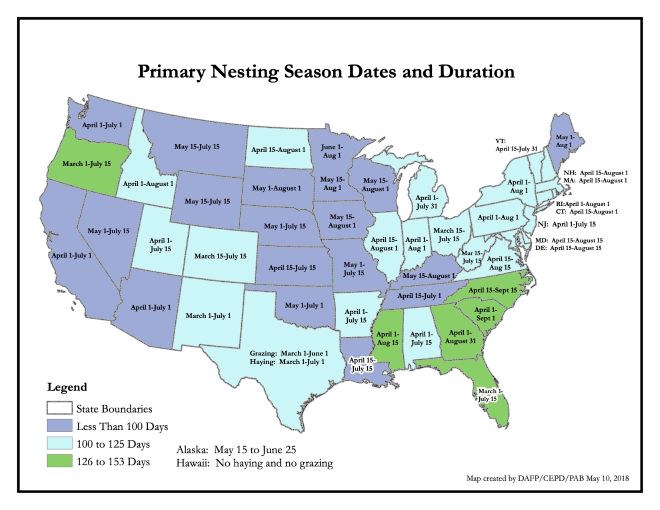Public land “quiet periods” starting to take effect across the pheasant range
Jared Wiklund, Director of Communications
As the calendar hits mid-April, ring-necked pheasants are starting to nest across a large swath of North America. Right now, the beginning of nesting season (through late July) is one of the most important times of the year for determining what fall populations could look like.
To safeguard this critical timeframe, many states are about to enter a quiet period, commonly referred to as the “nesting season ban,” which restricts the training of dogs on public lands to protect breeding wildlife and offspring. As an example, Minnesota Statute 97B.005 states: “A person may not train hunting dogs afield on public lands administered by the [DNR] commissioner from April 16 to July 14 except as specifically authorized by permit or rule.”
From an ethical standpoint, hunters and bird dog owners should be doing everything in our power to help wildlife thrive on the landscape, including leaving our favorite quarry undisturbed during the most critical time of the year. Many look forward to the fall season and subsequent upland memories that accompany the months of September - February; pressuring upland gamebirds with bird dogs during the nesting and brood-rearing season is simply biting the hand that feeds you.

“There’s no way around the fact that a dog is going to cause stress to an upland bird in the process of pursuing it. And we know that sitting on nests is when hens are most vulnerable from a body condition standpoint. The nesting season ban for bird dogs is there for a reason - giving the best shot at success to the first nest attempt when recruitment potential is highest,” said Ron Leathers, chief conservation officer for Pheasants Forever and Quail Forever. “The first nest attempt is the best nest attempt. A hen will lay the most eggs in the first nest and have the highest likelihood of turning an early-season egg into a fall rooster. When a nest is abandoned due to dog pressure during the laying or early incubation stage, the hen lays fewer eggs during each subsequent nesting attempt, leading to chicks hatched later in the season with a lower chance of survival.“
With the dramatic change of grassland landscapes in the Midwest, including a major reduction in CRP acres over the last decade, we have reached a critical point when it comes to undisturbed nesting cover. The key word in this phrase is “undisturbed,” and many public lands in the pheasant range remain the stronghold for this cover type.
As one the primary users of public lands, pheasant hunters must lead the way in following the rules and educating those within our ranks who may be in violation. Additionally, I highly recommend a self-imposed nesting season ban for your four-legged hunting crew on private lands – you can even stretch it out until mid-August to allow those late-nesting hens a chance to raise a brood.
More successful early nesting attempts means more birds in the population this summer, and more enthusiastic hunting parties when pheasant seasons open.
So, does the nesting season ban require going cold turkey on dog training? Absolutely not.
“As far as introduction or training is concerned, taking a three-month hiatus from wild birds is not going to make or break a bird dog,” Leathers added. “There are lots of alternatives from training clubs (NAVHDA for example) and game farms to open training grounds in your local community that are designed for year-round hunting dog use.”
Upland hunters should contact their local conservation officer for more detailed information about dog training on lands administered by your state DNR agency from early spring through midsummer.